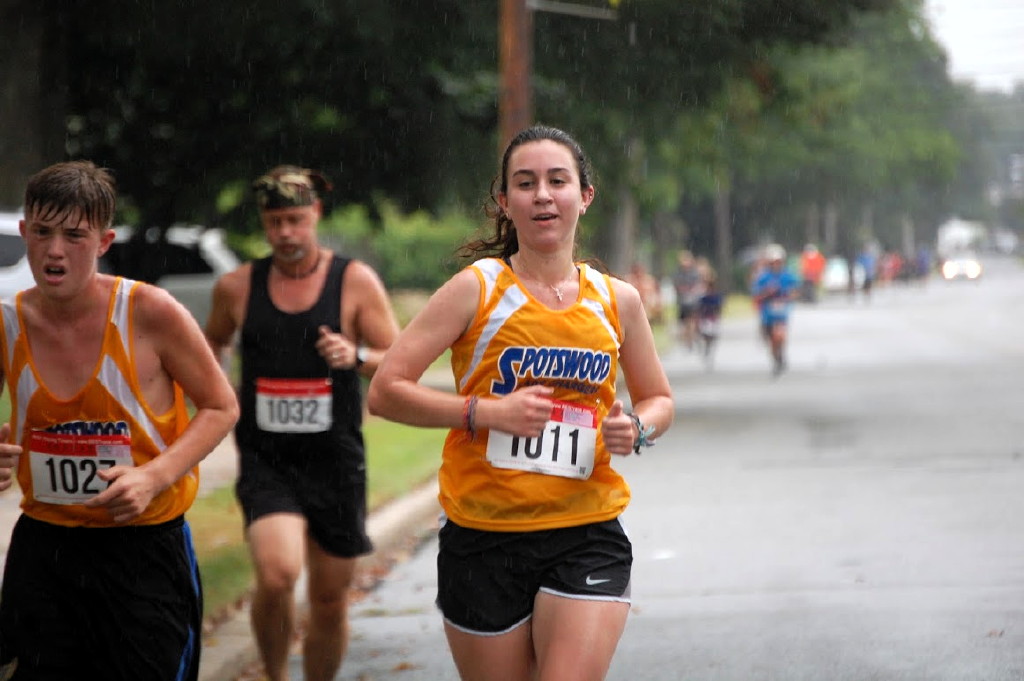By Dr. Erica Beckenhauer, PT, DPT
ProFysio Physical Therapy
Any runner can probably attest to some sort of ache or pain either on the course, after a challenging workout, or throughout the course of his training. Most runners can also relate to wanting to run as much as possible, rather than spend time in the gym strengthening.
However, this mindset often leads a runner down the road to injury if he/she lacks the strength it takes to match the high physical demands of running. Some commonly seen injuries experienced by runners include patellofemoral pain syndrome, IT band syndrome, and shin splints. By now, you may be asking yourself what that means. Let’s talk about each injury and exercises for injury prevention.
Patellofemoral pain syndrome (PFPS), a term used to describe pain directly underneath the kneecap, is a disorder commonly seen in runners with hip weakness. PFPS is one of the most common injuries affecting active populations, and is most cases is able to be treated conservatively. The muscles on the outside of the hips, more specifically the gluteus medius, has a lot of control over the angle of the knee. When this muscle is weak, the knee tends to collapse inward during the gait cycle and, over time, can contribute to knee pain. Runners with PFPS will often not have symptoms immediately, though sharp, burning or stinging pain develops as their run time increases.
IT band syndrome is used to describe pain on the outside (or lateral aspect of) the knee. The iliotibial band is a tendon which attaches to the tensia facia latea (TFL) as well as the outside of the knee. The IT band can be affected when the TFL has dysfunction and when a person performs repetitive flexion and extension of the knee, such as during running or cycling.
Lastly, shin splints is a commonly used term to describe a range of injuries occurring in front of the lower leg. This term can be used to describe an injury of the bone, muscle, or even nerve on the front of the leg. Shin splints are commonly due to overuse, though pain in this area warrants the examination of a physical therapist of health care profession.
Implementing specific exercises can prevent some of these injuries, such as side-lying hip abduction, standing hip abduction, single leg stance, pelvic drops, clamshells, bridges and step ups.
Other considerations for running injury rehabilitation and prevention include dynamic warm ups, running cadence manipulation, gait analysis and retraining, and periodization. Exercises alone are often only part of a comprehensive treatment program for running injuries.
All exercises discussed work best in addition to an all-inclusive evaluation performed by a licensed physical therapist or running professional. Doctors of Physical Therapy are able to identify running gait deviations, muscular imbalances, and skeletal injury commonly seen in active populations. If you have pain that persists or is limiting your desired level of activity, you should consult a Doctor of Physical Therapist that specializes in the diagnosis and treatment of running related injuries.
As an avid runner herself, Dr. Erica Beckenhauer is a Certified Running Gait Analysis through the Association of Clinical Excellence, and has a passion for serving others and strives to promote wellness through movement. Dr. Beckenhauer earned her Doctorate of Physical Therapy at Lynchburg College in Virginia.
ProFysio Physical Therapy is located in the Browntown Plaza at 2665 Route 516 in Old Bridge; at 2124 Route 35 south at the Laurel Avenue intersection in the Holmdel Medical Center, Holmdel; 1212 Route 34, Suites 24-25; and at 510 Route 18 north in East Brunswick.


